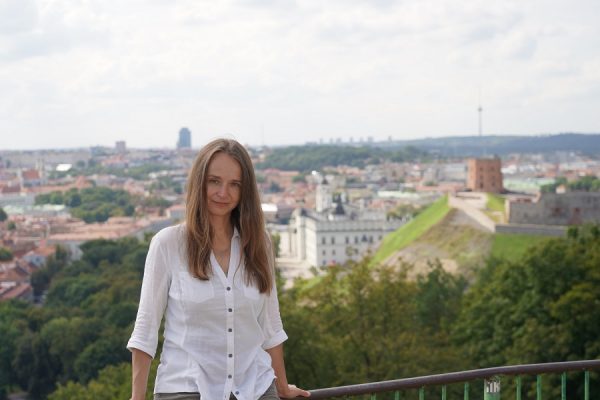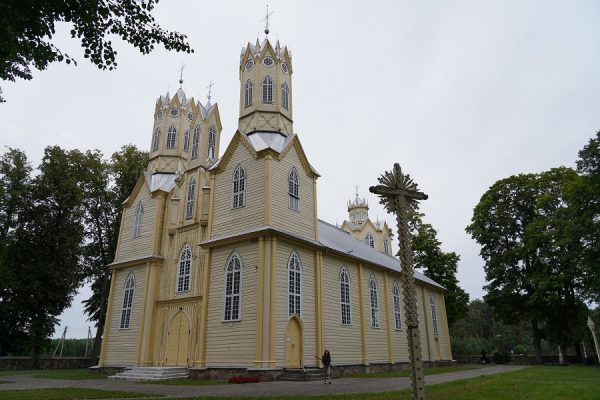RESEARCH EXCELLENCE INITIATIVE
FREEDOM OF RESEARCH – SCIENCE FOR THE FUTURE
“Freedom of research – science for the future” series consists of articles, interviews and short videos presenting research conducted by the winners of “Freedom of research”
Mirosława Sobczyńska-Szczepańska, PhD
Tracing the steps of the last Polish Trinitarian
| Olimpia Orządała |
Sometimes scientists conducting research accidentally come across another completely different but equally fascinating research topic. This is what happened to Mirosława Sobczyńska-Szczepańska, PhD, from the Institute of Arts Studies of the University of Silesia, who for the last decade and a half has dealt with the art produced by the Order of the Most Holy Trinity and of the Captives (Trinitarians). When collecting the source materials on order painters operating within the Republic of Poland in the 18th century, during her scientific inquiries into Roman archives, the winner of the “Freedom of Research” call for proposals came across the priest Antoni Anzelm Noniewicz 1836-1907.
“I found interesting materials in the Trinitarians’ archive in Rome on the last member of the order – Antoni Anzelm Noniewicz, who is considered to be the last Trinitarian in the Polish-Lithuanian province. He is an immensely interesting figure”, the researcher admits.

The order was brought to the Republic of Poland by Jan III Sobieski in 1685. In total, there were 30 monasteries within Poland, but they were successively closed, some as a result of the so-called Josephian closures in 1783 and others after the November Uprising and January Uprising.
“The aforementioned friar entered into the monastery in Vilnius a few years before it was closed down. That was the last Trinitarian monastery on the territory of the then Republic of Poland. It was closed down in 1864. The friars from the closed monasteries mostly became diocesan priests”, M. Sobczyńska-Szczepańska explains.
Before entering into the order, Rev. Noniewicz was studying architecture and painting. We know this from letters written in Latin and Italian to the then general of the order Antonio of the Conception, which the call for proposals winner found in the Trinitarians’ archive by the San Carlo alle Quattro Fontane church in Rome. It was in the Eternal City where the headquarters of most of the orders were located and next to them were main archives, constituting a treasure vault of information for researchers of order art from all over Europe.
“The Minister General of the Trinitarian Order residing in Rome, Antonio of the Conception, was a historian and an archivist. He made it his mission to recreate the history of the order, so he sent emissaries to the territory belonging to the former Republic of Poland and to the monarchy of Austria and Hungary to collect as many documents as possible made by Trinitarian monasteries in Central Europe”, says the researcher.
Those emissaries reached Rev. Noniewicz by letters and then visited him in Sokółka in Podlasie, where he served as the parish priest. The meeting took place in 1907, four months before his death. Shortly after the monastery in Vilnius was closed down, just before he was to become a diocesan priest, the former friar made sure to protect a large part of the archive. Therefore, he could hand over to the emissaries a great number of documents connected with the monastery, among others, order catalogues, which contained records of joining the order, dates and places of completed novitiates, dates of religious vows taken, completed studies, and performed functions.
“What made Rev. Noniewicz an exceptional person is a fact that he was fluent in six languages: Polish, Latin, Lithuanian, Russian, French, Italian, and German”, M. Sobczyńska-Szczepańska points out. “He was a person of broad horizons. He wrote in one of his letters to Antonio that when leaving the monastery in Vilnius, he took with him not only archival records but also many paintings, with the permission of his superior. Unfortunately, so far I was unable to find them”.
The researcher from the Institute of Arts Studies of the University of Silesia in her search for the aforementioned paintings decided to go to Lithuania (Vilnius, Nemajūnai, Daugėliškisi, Jieznas) and Podlasie (Białystok, Sokółka) to conduct archival research and visit churches in which Rev. Noniewicz served as a priest.
“Rev. Noniewicz modernised the church or build a new one in every town where he was the parish priest,” says the researcher. “In Nemajūnai, a new, incredibly interesting, wooden neogothic church was built (see the picture). When I encountered a reference to it in Rev. Noniewicz’s obituary, I thought that it must have been a mistake, because wooden buildings are not usually built in neogothic style. As it turns out, it really is a wooden, three-nave church with a two-tower façade with gothic forms, ogival windows, and wimpergs.

Sokółka was the last parish where Rev.Noniewicz served. He expanded the church – from one-nave, it turned into a three-nave building with two domed chapels. In addition, as Sokółka’s dean, he managed a dozen other parishes.
“In the Archdiocesan Archive in Białystok, I have found many documents from the parish in Sokółka, which indicate that the former friar knowledgable in the matter oversaw the expansion of the church,” explains M.Sobczyńska-Szczepańska.
Rev. Noniewicz paid attention to, among others, mistakes made, bills overcharged, or purchases of improper materials. He was interested also in all real property investments made within the territories of the deanery. Moreover, he preserved old paintings in Sokółka’s church.
“I wasn’t able to find the paintings taken from Vilnius by Rev. Noniewicz, but I have reconstructed his life and activity. The last Polish Trinitarian was an exceptional, multi-talented, and incredibly active person, also when it comes to architecture,” the “Freedom of Research” winner summarises.





